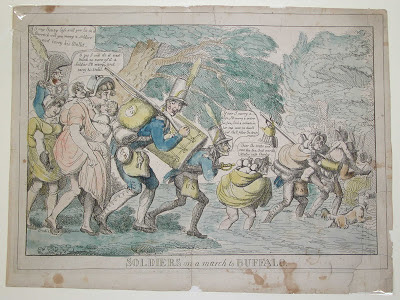Post by Brian Dunnigan, Associate Director and Curator of Maps
The name “Molly Pitcher” and her actions helping to “man” a cannon at the Battle of Monmouth in 1778 might strike a chord of recognition among those familiar with the American Revolution. Much less known is a heroine of the War of 1812, who also helped serve a gun two hundred years ago on November 22. Betsy Doyle, wife of a US artilleryman at Fort Niagara, New York, stood by the soldiers stationed on a gun platform during a ferocious exchange of cannon fire with British-held Fort George across the Niagara River.
Betsy, whose name is often incorrectly given as “Fanny,” was the wife of artilleryman Andrew Doyle. As such, she was one of many married women who accompanied their husbands into the field with both the British and American armies. Doyle was not present to witness his wife’s heroism; he had fought in the Battle of Queenston Heights on October 13, where he was taken prisoner. Betsy was left to fend for herself at Fort Niagara. She, like most army women, helped support her family by laundering soldiers’ clothing.
When the cannon began to roar on November 22, 1812, Betsy abandoned her washtub and offered her services to a gun crew from her husband’s regiment. During the ensuing barrage, she carried red-hot cannon balls from the furnace to the gun where they were fired at Fort George, 1,300 yards away. Fort Niagara’s commandant took note and reported that Betsy “showed a fortitude equal to the Maid of Orleans.”
The participation of women in America’s wars is recorded in many scattered sources—order books, letters, journals, and official records for all of America’s early wars, and these sources are well represented at the Clements Library.

